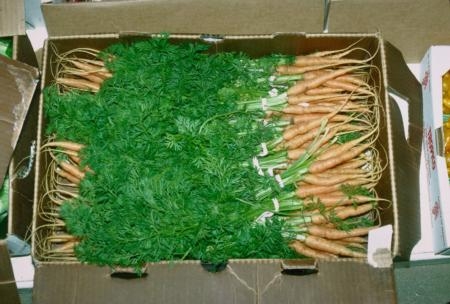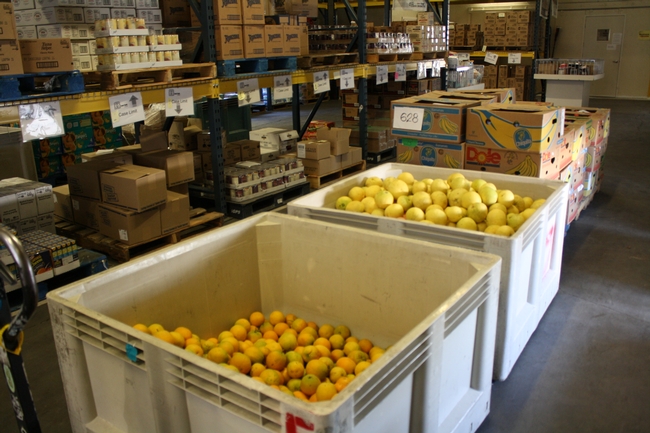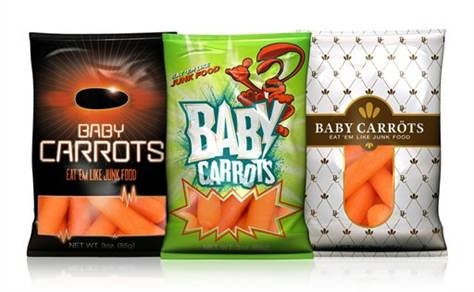Posts Tagged: carrots
Breeding a better carrot
Whether farmers are growing carrots destined to be baby-sized for school lunches, cut into small pieces in frozen pot pie or the classic length sold with their green feathery tops intact, they rely on a collaborative breeding program that has been in the works at UC’s Desert Research and Extension Center near El Centro for nearly 50 years.
The scientists working in USDA’s carrot breeding program, embedded at the University of Wisconsin, Madison, realized long ago that the Southern California desert agriculture research facility has the ideal climate and soil to grow their experimental hybrids through the winter months.
Each spring, the scientists gather for a tasting. The carrots grown in DREC’s fields are then shipped to Wisconsin, where they will be planted to produce seeds. In the fall, a new batch of seeds will be shipped back to El Centro, where they will be planted, and in turn harvested again sometime in February 2014 for evaluation.
More than 1,000 varieties are grown each year on a one-acre nematode-free section of the research center with silty clay soil. In 88 beds each 120 feet long, a different carrot variety is planted every six feet under the direction of center superintendent Fernando Miramontes.
Over the years, the industry’s carrot preferences have changed. Specific cultivars are grown to create the now ubiquitous baby carrot.
“We grew about 100 varieties for the cut and peel sector of the industry,” said Rob Kane, a University of Wisconsin staff research associate who works with project leader, Phil Simon, UW research geneticist and professor of horticulture. “Farmers want a carrot that is about five-eighths inches in diameter, 14 inches long that they can cut into four pieces to make baby carrots.”
Another part of the trial contains varieties for “cello” carrots, which have different characteristics.
“Cello carrots are wide at the shoulders and taper more,” he said. “Long length doesn’t work for the cello carrots. Refrigerator vegetable drawers aren’t big enough.”
A third part of the trial contains novelty carrots, with cultivars in shades of purple, yellow, red and white.
“These carrots hold promise for juice development,” Kane said. “They can be sources of antioxidants that are said to be cancer preventative. Red carrots have lycopene, yellows have leutien and purple carrots have anthocyanins.”
Size and color are important, but the most significant trait scientists seek is good taste.
“We’re looking for a carrot that is smoother, has better flavor and disease resistance. You never have a complete package,” said Professor Simon recently told the Imperial Valley Press. “It’s crucial to have rich, full flavor. I know it when I taste it.”
Some hae meat, and canna eat . . .
"Some hae meat, and canna eat,
And some wad eat that want it . . ."
The words are old and a little hard to understand, but they tell a story that's as true today as when the poet Robert Burns spoke them back in the 1790s. They were old words even then. Always, it seems, there are those of us who are fortunate enough to eat well and those of us who go hungry, even in a country as rich as ours.
One morning last May, I got to meet some folks who help ease that hunger in the community where I live. That morning I drove with my wife to an industrial area on the northeast side of Woodland, California, where the Food Bank of Yolo County does its business. Outside the warehouse door delivery trucks from local markets, chain stores, farms, and other food sources came and went, mingling with buyers' pickups and trailers from churches and other charitable groups.
The big trucks were there to deliver what many retailers would consider marginal goods: bread, dairy products, meats, and canned and dry goods that were moving too slowly off the shelves or getting too close to their sell-by dates; a cardboard harvest bin of loose carrots in the walk-in, donated by a grower who was getting ready to put in a new crop; 50-pound sacks of potatoes or onions that were either too much for the food service market or were set aside by generous handlers or a government agency for exactly the purpose they were about to serve: to feed the hungry.
These days about 35 percent of the stock you can see in this Food Bank warehouse has been donated outright. The rest comes from government agencies or direct purchases from the California Association of Food Banks. A few years ago the directors of the Food Bank of Yolo County shifted their focus toward providing clients with fresher, more nutritious food, and since then they have brought their fresh produce sales from about 50,000 pounds a year up to a high of 1 million pounds in 2010.
That morning in May my wife and I joined other groups of buyers inside the warehouse, each of us picking through the low-priced goods for just the right mix of products to refill the shelves of a soup kitchen or—as in our case—a local food closet. Loaves of bread, a case of canned tomatoes, a box of apples, macaroni and cheese mix, a shrink-wrapped bundle of bags of flour. We loaded our wheeled dolly three times: first came the bread, which a food bank volunteer weighed before we loaded it into the truck; then the produce, likewise weighed on the dolly and loaded; and finally the canned and dry goods, which are priced by the case. Five flats of eggs we put in the pickup's back seat for a smooth ride. For a little less than $100 we got enough food to fill the truck.
A short trip then took us back to the food closet at our church, where 8 or 10 women and men, most of them well into their retirement years, bustled around the edges of the sorting table that filled the middle of the small room, stacking cans on shelves, putting bread, tortillas, and eggs into the refrigerators, doling potatoes, onions, rice, and beans from 50-pound sacks into smaller, consumer-sized bags, and pointing out to me firmly and kindly each time I put a box or bag down in the wrong place. Which was pretty often. Before an hour was up, the closet was stocked and locked up and ready for food distribution the next day. Two distributions a week from our closet alone can serve up to 50 families in need.
There's plenty that you can do, too, to help relieve hunger in your own community. Find your nearest food bank on the California Association of Food Banks website, or ask around to find out about local food closets or soup kitchens.
Then all you need to do is pitch in. If you've got the time, they've got the need.
Putting a spin on baby carrots
A few weeks ago, I attended the California Childhood Obesity Conference, where I heard Bryan Reese, Chief Marketing Officer, of Bolthouse Farms speak about the brilliant marketing campaign launched by "A bunch of carrot farmers."
Baby carrots were "invented" in the 1990s and became an instant hit. Not only did it transform the industry, but American consumers doubled their consumption of carrots in the ensuing decade. Then, a couple of years ago, after this remarkable growth, consumption began to fall.
Reese credits the decline to a number of factors, the economy being a primary one. Consumers were trying to save money, so they were buying regular carrots. Since those carrots need peeling, washing and cutting at home, a lot of those carrots were relegated to what the industry calls "the drawer of death" - your refrigerator's vegetable bin - where they remained uneaten.
To make a long story short, Bolthouse hired an edgy ad agency with a client list that includes Kraft Foods, Dominos Pizza and Coke Zero. The campaign aimed to turn the brand on its head: Stop marketing baby carrots as a vegetable and start marketing them as a snack.
"The snack food industry was already trying to make their products appear healthy. We're already healthy. Look! One ingredient!" quipped Reese in his presentation.
In two test markets, a $25 million campaign was launched, including media, a web site, vending machines in schools, repackaging of the product, and a marketing tie-in with the animated movie Hop. No longer sitting demurely in the produce aisle, baby carrots were transformed into an extreme snack whose packaging and marketing resemble chips.
The results: Baby carrot consumption in the test markets increased by 10 to 12 percent, vending machines were dispensing 80 to 90 individual packs per week, schools were inquiring about installing their own machines, and the campaign started generating enviable national PR buzz.
What's next? A national roll out of the campaign. So look for Extreme Baby Carrots in a refrigerated case near you.




